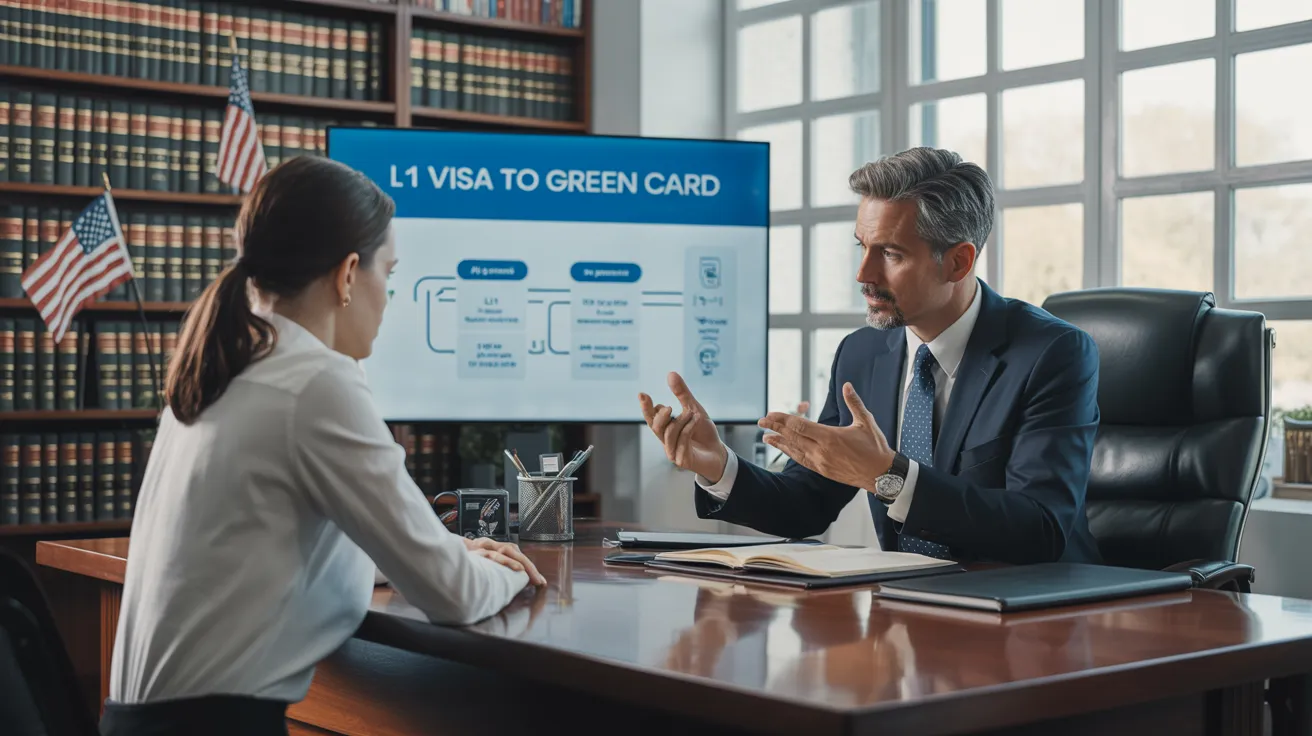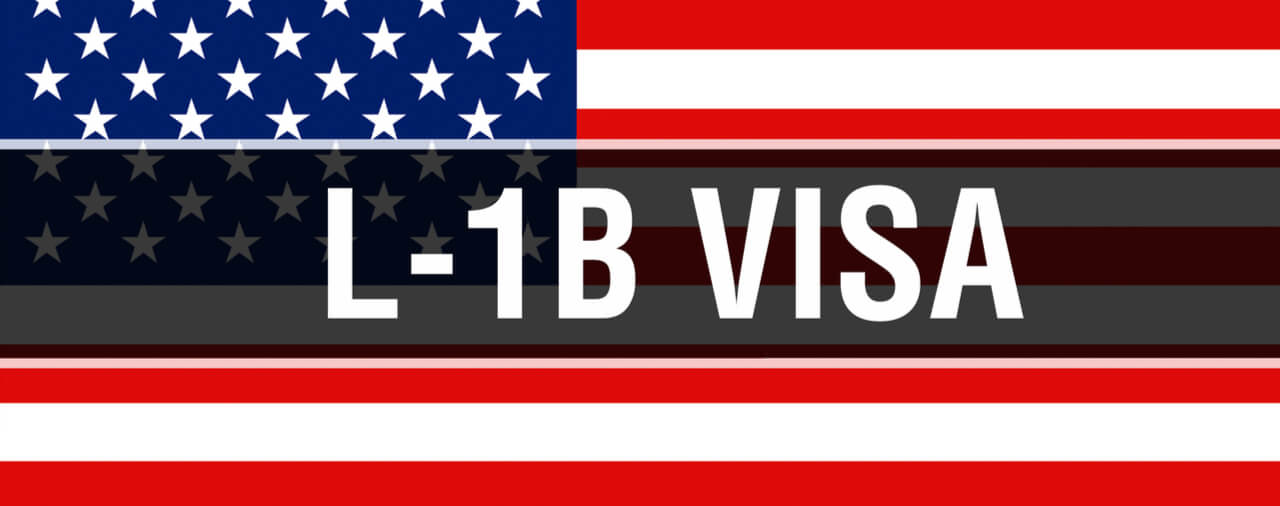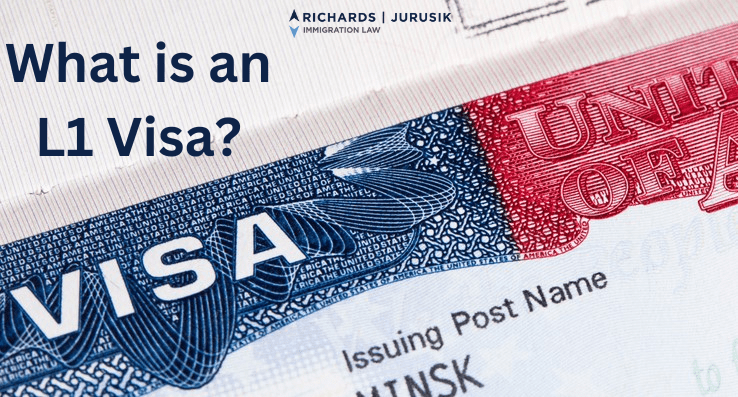Unlocking Opportunities: A Comprehensive Guide to the L1 Visa Process
The L1 visa process provides a critical path for international business seeking to transfer essential workers throughout boundaries. Recognizing the subtleties of qualification criteria, the distinctions in between L-1A and L-1B visas, and the complexities of the application process can greatly impact a candidate's success. Nonetheless, steering this facility landscape is not without its difficulties, and cautious interest to paperwork and company sponsorship is essential. As we check out the key elements of this process, the methods for overcoming prospective challenges will certainly come to be evident, disclosing exactly how educated prep work can open up a world of possibilities.
Comprehending the L1 Visa
Understanding the L1 visa requires recognizing its relevance as an essential tool for international business looking for to move experienced employees in between worldwide offices. This non-immigrant visa classification facilitates the movement of execs, managers, and specialized expertise employees to the United States, therefore enabling companies to preserve functional continuity and harness international talent effectively. The L1 visa is split into two primary classifications: L-1A for supervisors and execs, and L-1B for staff members having specialized knowledge.The L1 visa offers a crucial role in boosting a firm's affordable edge in the international market. By allowing companies to move their key personnel, organizations can guarantee that essential projects are taken care of by qualified people that are currently acquainted with the business's society and functional procedures. L1 Visa. This internal transfer mechanism not just promotes understanding sharing yet likewise advertises technology and partnership across borders.Moreover, the L1 visa is typically favored for its fairly straightforward application process contrasted to other visa groups, as it enables dual intent, allowing owners to pursue irreversible residency while on a short-term job visa. This function makes the L1 visa specifically appealing for both employers and workers, as it simplifies the path for knowledgeable professionals to establish long-lasting residency in the USA
Qualification Requirements
Qualification for the L1 visa depends upon a number of essential standards that ensure both the staff member and the company fulfill details certifications. This non-immigrant visa is made for multinational firms to transfer workers from foreign offices to U.S. counterparts.Firstly, the employer needs to be a qualifying company, that includes a parent business, branch, associate, or subsidiary of an U.S. service. The company must have been doing business for a minimum of one year both in the U.S. and abroad. This ensures that the firm has sufficient operational stability and a reputable presence.Secondly, the worker should hold a supervisory, executive, or specialized knowledge placement. For L1A visas, the candidate needs to show supervisory or executive credentials, while L1B visas concentrate on specialized understanding relevant to the organization's products, solutions, or processes. In addition, the employee should have benefited the foreign entity for at least one constant year within the last 3 years before their application.Lastly, the worker's role in the united state have to straighten with their previous placement, making sure that their skills and competence are leveraged for the firm's benefit.

Kinds Of L1 Visas
The L1 visa category makes up two key types designed to facilitate the transfer of workers within international companies: the L1A visa for managers and executives, and the L1B visa for workers with specialized expertise. Each type offers distinctive functions and has particular eligibility criteria.The L1A visa is tailored for people that hold managerial or executive positions within a business. This visa makes it possible for top-level employees to transfer to a united state branch, subsidiary, or associate of the same organization. Applicants for the L1A visa have to show that they have been used in a supervisory or executive ability for at least one continuous year within the previous three years prior to their application. Additionally, this visa uses a much longer period of keep, at first given for three years, with the opportunity of extensions for approximately 7 years.In comparison, the L1B visa is planned for experts with specialized expertise pertaining to the business's products, solutions, or procedures. To qualify, applicants need to verify that their experience is essential to the organization which they have actually helped a minimum of one constant year within the last 3 years in a role that needed this specialized understanding. The L1B visa is at first approved for 3 years, with expansions available for as much as five years.Both visa kinds are essential for companies looking for to boost their worldwide operations by leveraging knowledgeable personnel, consequently advertising advancement and efficiency within the U.S. market.
Application Process
Guiding through the L1 copyright process involves numerous vital steps that must be diligently followed to guarantee an effective result. The procedure starts with the U.S. employer, who should first develop eligibility by showing a certifying relationship with the international entity and validating that the worker fulfills the particular demands for the L1 visa classification being sought.Once eligibility is verified, the employer starts the process by submitting Type I-129, the Request for a Nonimmigrant Employee, with the U.S. Citizenship and Immigration Solutions (USCIS) This kind needs to be gone along with by a detailed description of the work tasks to be executed, the business structure of both the U.S. and foreign entities, and the worker's qualifications. It's important to confirm that all details is precise and complete, as noninclusions or mistakes can result in delays or denials.Upon approval of the I-129 petition, the following action involves the worker looking for the L1 visa at a united state consular office or consulate in their home country. This phase requires the conclusion of Kind DS-160, the Online Nonimmigrant copyright, and scheduling an interview. Throughout the interview, the applicant should provide proof sustaining their credentials and the employer's petition.After the visa is granted, the staff member can get in the United States to operate in the marked function. Overall, careful preparation and adherence to each step of the application procedure are necessary for a successful L1 visa outcome.
Needed Documentation

Necessary Forms Needed
Maneuvering the L1 Visa process calls for careful attention to the important types and documentation necessary for an effective application. The key type needed is the Form I-129, Request for a Nonimmigrant Worker, which have to be completed and sent by the united state company (L1 Visa). This type details the details of the employment deal and the credentials of the employee looking for the L1 Visa.Alongside Kind I-129, the candidate will certainly need to complete Kind I-539 if coming with relative are additionally looking for visas. In addition, the employer needs to offer evidence of the qualifying partnership in between the U.S. entity and the foreign entity, typically necessitating the entry of business files such as short articles of incorporation or economic statements.Moreover, it is important to consist of the L Classification Supplement to Kind I-129, which defines the type of L Visa being asked for-- either L-1A for managers and executives or L-1B for workers with specialized understanding. Ultimately, applicants need to assure that all kinds are authorized and dated properly, as incomplete submissions can cause hold-ups or denials. Appropriately setting up these crucial forms lays the structure for a smoother L1 copyright procedure
Supporting Proof Demands
Supporting documentation is essential for a successful L1 copyright, as it confirms the insurance claims made in the petition. Candidates need to supply a range of papers to demonstrate eligibility for the visa, which is categorized into 2 key types: evidence of the qualifying partnership between the U.S. and international entities and evidence of the candidate's qualifications.To establish the partnership, candidates must submit paperwork such as corporate organizational charts, financial declarations, and proof of ownership. These files verify that the foreign company has a qualifying partnership with the united state employer, whether L1 Visa as a parent business, subsidiary, branch, or affiliate.For the applicant's credentials, crucial files include an in-depth work letter from the international company, describing the candidate's work title, duties, and duration of work. In addition, academic qualifications, such as degrees and diplomas, ought to be supplied to prove the candidate's knowledge in the appropriate area.
Employer Sponsorship Records
Employer sponsorship papers play a vital function in the L1 copyright process, as they confirm the U.S. employer's commitment to the candidate's work in the USA. These records are vital for demonstrating the employer's eligibility to sponsor the candidate for the L1 Visa.Key records typically called for consist of a thorough work letter from the U.S. employer, which lays out the job title, responsibilities, and the nature of the employment relationship. In addition, the employer must give proof of the company's legitimacy, such as service licenses, income tax return, and business charts, showing the relationship between the united state entity and the foreign company.Furthermore, evidence of the employee's certifying partnership with the foreign firm is required. This may include documents evidencing the worker's duty in the international entity, such as pay stubs, employment contracts, or performance examinations.
Usual Difficulties
Navigating the L1 visa procedure presents several usual challenges that candidates need to know (L1 Visa). Trick concerns often consist of rigorous documentation needs, potential delays in handling times, and the need for stringent lawful compliance. Recognizing these barriers can aid candidates better prepare and mitigate dangers during their copyright journey
Paperwork Requirements
The L1 copyright procedure commonly presents substantial challenges related to documents demands. Applicants must supply extensive paperwork to establish qualification, which can result in complication and possible hold-ups. Secret papers consist of proof of a certifying partnership in between the united state and foreign company, proof of the applicant's employment history, and in-depth information regarding the work duty in the U.S.One usual obstacle is collecting adequate evidence to demonstrate the nature of the certifying relationship. Companies commonly have a hard time to existing clear business graphes or financial declarations that show the connection in between the entities. In addition, making certain that letters of assistance from companies precisely reflect the applicant's job obligations and certifications is crucial, as unclear summaries can cause denials.Another concern arises from the demand for in-depth task summaries that line up with the L1 visa groups. Applicants must express not just their existing role yet additionally their supervisory or specific understanding obligations plainly. This demands an extensive understanding of both the candidate's position and the regulative language made use of in L1 applications.
Processing Dead Time
Experiencing hold-ups in handling times is a common difficulty encountered by L1 visa applicants, commonly causing stress and unpredictability. Numerous elements add to these hold-ups, consisting of high application volumes, enhanced examination of applications, and administrative stockpiles within the U.S. Citizenship and Immigration Provider (USCIS) Applicants might find that processing times can differ substantially depending on the service center managing their application, as each center has its very own work and efficiency levels. In addition, the intricacy of the applicant's case, such as the need for extensive documents or explanation, can further extend wait times.In some instances, issues connected to the applicant's current immigration standing or previous visa history might also cause extra delays, as USCIS may need additional testimonial or details. It is important for prospects to remain aggressive throughout this period, preserving open interaction with their employers and legal reps to address any kind of possible concerns promptly.Understanding these processing time obstacles can help L1 visa candidates get ready for feasible hold-ups and minimize the effect on their change and occupation plans. Perseverance and persistance are essential virtues in maneuvering this complex procedure.
Lawful Conformity Issues
Many L1 visa applicants come across lawful conformity problems that can complicate their trip toward obtaining the visa. Understanding and adhering to the certain laws set by the united state Citizenship and Migration Services (USCIS) is crucial. Usual challenges include demonstrating the qualifying relationship between the foreign and united state companies, along with verifying that the candidate has the requisite specific understanding or managerial capacity.Additionally, candidates have to give extensive documentation describing their task responsibilities, corporate framework, and monetary feasibility of the U.S. entity. Insufficient or unreliable documents can bring about hold-ups or perhaps rejections. Employers must also ensure that they follow labor regulations, including wage and working problem criteria, which can affect visa eligibility.Another common problem involves keeping compliance with the terms of the visa as soon as granted. Adjustments in employment status, task obligations, or business structure can necessitate modifications to the visa, which otherwise attended to without delay can bring about lawful complications. Therefore, staying informed about conformity needs and seeking lawful guidance when essential is necessary to browse the complexities of the L1 visa process successfully.
Tips for Success
Success in the L1 copyright process typically depends upon careful prep work and attention to detail. To enhance your possibilities of authorization, start by thoroughly recognizing the qualification requirements for both the L1A and L1B visa groups. Examine whether your placement at the company qualifies as supervisory, executive, or specialized expertise, as this categorization notably impacts your application.Next, gather extensive paperwork that substantiates your cases. This consists of business graphes, comprehensive job descriptions, and proof of the company's functional structure. Clear and concise proof of the qualifying partnership between the U.S. entity and the international entity is essential. Confirm that all documents are organized logically and presented in a professional manner, as this shows your commitment and severity about the application.Engage the services of a knowledgeable immigration attorney that concentrates on L1 visas. Their expertise can confirm important, leading you via complex laws and ensuring that all documents adheres to present legislations. Furthermore, get ready for the interview by practicing solution to typical questions and preparing to discuss your role and payments to the business comprehensive.
Regularly Asked Questions
Can Family Members Come With the L1 Visa Owner?
Yes, member of the family of L1 visa owners, including spouses and unmarried youngsters under 21, can go along with the main visa owner. They might also get L2 visas, which allow them to stay in the United States.
For How Long Can I Remain On an L1 Visa?
The L1 visa allows initial remains of as much as three years, with the possibility of expansion. L1A visa holders may remain for a maximum of seven years, while L1B visa owners can remain for 5 years.
Can L1 Visa Holders Get a copyright?
Yes, L1 visa owners can get a permit. They may pursue permanent residency through employment-based groups, normally needing sponsorship from their employer, provided they satisfy the essential qualifications and documentation needs.
What Happens if My L1 copyright Is Refuted?
If your L1 copyright is denied, you might get a notice outlining the factors for denial. You can seek to appeal the choice, reapply, or check out alternate visa options based on your scenarios.
Are There Any Type Of Travel Limitations With an L1 Visa?
An L1 visa usually enables for worldwide traveling; however, re-entry to the united state rests upon preserving valid status. Vacationers must guarantee compliance with visa conditions to stay clear of difficulties upon return
Verdict

Comments on “L1 Visa Process”